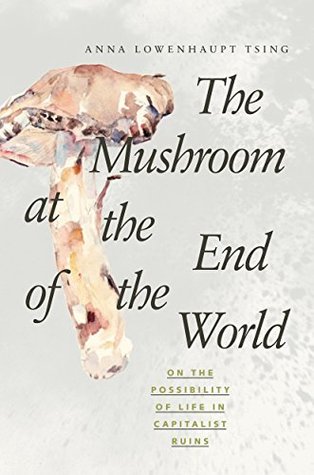More on this book
Community
Kindle Notes & Highlights
Started reading
March 2, 2018
Trading creates capitalist value through its work of translation.
In capitalist logics of commodification, things are torn from their lifeworlds to become objects of exchange.
This is the process I am calling “alienation,” and I use the term as a potential attribute of nonhumans as well as humans.
The surprising thing about the search for matsutake in Oregon is that it does not involve alienation in the relation between foragers and mushrooms. The mushrooms are indeed torn from their fungal bodie...
This highlight has been truncated due to consecutive passage length restrictions.
For generations of social analysts, kula exchange has inspired thoughts about the varied ways value is created.
Kula reminds us that things as well as people are alienated under capitalism. Just as in factories workers are alienated from the things they make, allowing those things to be sold without reference to their makers, so too, things are alienated from the people who make and exchange them.
Kula valuables are known through the personal relations they make; people of note, in turn, are known through their kula gifts. Things, then, do not just have value in use and commodity exchange; they may have value through the social relationships and
we might divide the world into “gift economies” and “commodity economies,”
The gift-versus-commodity distinction can stand in for the absence or presence of alienation, the quality necessary to turn things into capitalist assets.
Matsutake become extensions of the person, the definitional feature of value in a gift economy.
efficient transfer of goods down the commodity chain. They are active mediators; they see their job as matching the matsutake with the very best buyers for that batch. One man who managed matsutake at a wholesale house explained, “I never sleep during matsutake season.” Whenever a shipment comes in, he must assess it. When he has made a judgment about the quality and special characteristics of the lot, he calls the right buyers—the ones who could use just that kind of matsutake. He has already given the mushrooms relation-making powers: the powers of quality.
buyers. From the first, then, the sale of matsutake is wrapped up with the making and maintaining of personal relationships. The mushrooms take on relational qualities; they are given the power to make personal ties.
It wasn’t just the smell or the taste, but the ability of the mushroom to build personal ties that made it so powerful.
This is salvage accumulation: the creation of capitalist value from noncapitalist value regimes.
It is time to reimbue our understanding of the economy with arts of noticing.
I have suggested we watch patches of livelihood come into being as assemblages. Participants come with varied agendas, which do their small part in guiding world-making projects. For
Mutualistic relations were interesting anomalies, but not really necessary to understand life. Life emerged from the self-replication of each species, which faced evolutionary and environmental challenges on its own. No species needed another for its continuing vitality; it organized itself.
The replication of DNA was mesmerizing; it formed an icon for modern science itself, which requires the replication of results, and thus research objects that are stable and interchangeable across experimental iterations, that is, without history.
they found that many kinds of environmental effects could be passed on to offspring, through a variety of mechanisms, some affecting gene expression and others influencing the frequency of mutations or the dominance of varietal forms.6
many organisms develop only through interactions with other species.
Some biologists have begun to speak of the “hologenome theory of evolution,” referring to the complex of organisms and their symbionts as an evolutionary unit: the “holobiont.”12
Natural history description, rather than mathematical modeling, is the necessary first step—as in the economy. Radical curiosity beckons.
Landscapes are not backdrops for historical action: they are themselves active.
We might begin by looking for drama and adventure beyond the activities of humans. Yet we are not used to reading stories without human heroes.
have shown that allowing only human protagonists into our stories is not just ordinary human bias; it is a cultural agenda tied to dreams of progress through modernization.
rather than limit our analyses to one creature at a time (including humans), or even one relationship, if we want to know what makes places livable we should be studying polyphonic assemblages, gatherings of ways of being.
This is the listening practice that this section of the book attempts to instill.
Assemblages coalesce, change, and dissolve: this is the story.
Telling stories of landscape requires getting to know the inhabitants of the landscape, human and not human. This is not easy, and it makes sense to me to use all the learning practices I can think of, including our combined forms of mindfulness, myths and tales, livelihood practices, archives, scientific reports, and experiments. But this hodgepodge creates suspicions—
To mix scientific and vernacular forms of evidence invites accusations of bowing down to science.
Disturbance is never a matter of “yes” or “no”; disturbance refers to an open-ended range of unsettling phenomena.
If we look at the interactions across many acts of ecosystems engineering, patterns emerge, organizing assemblages: unintentional design.
Through such cleanup, forests come to resemble plantations. Thus managers dream of stopping history.
History, then, is the record of many trajectories of world making, human and not human.
peasant forests of early-twentieth-century Japan


